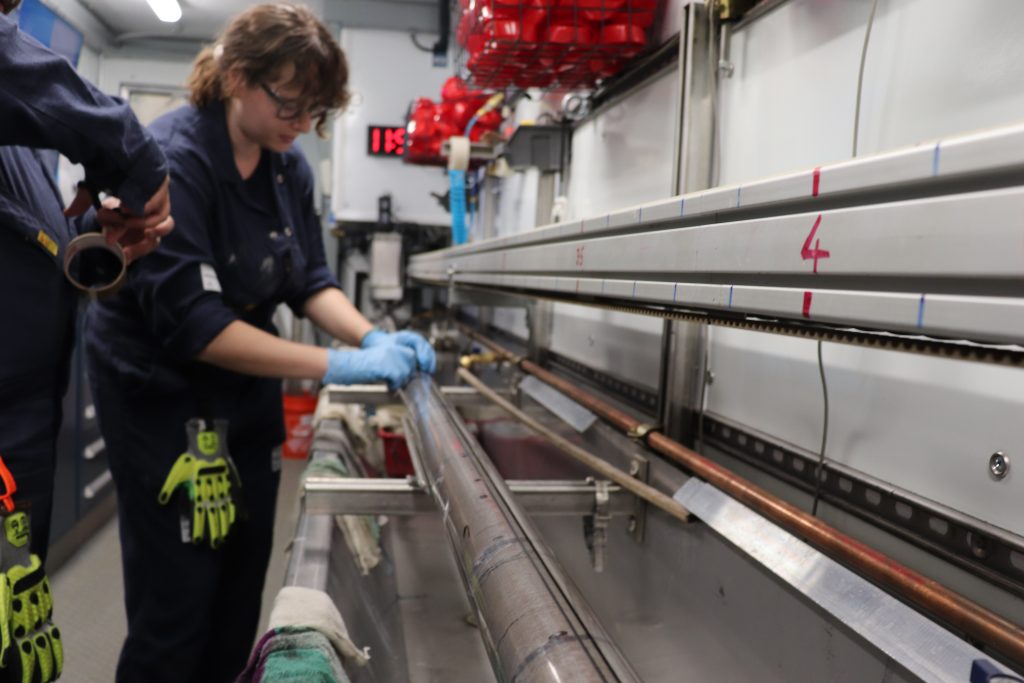Today is my last day on the Helix Q4000, the offshore platform where The University of Texas at Austin-led science team is sampling and studying the methane hydrate reservoir system below. I’ve been out here a week – and it’s gone by fast! This blog isn’t the last of my writing about the methane hydrate… Continue Reading Exploring One of the Largest Carbon Caches on Earth
Holding Tight
By Monica Kortsha Last night, Peter Flemings, the mission’s lead scientist and a professor at The University of Texas at Austin Jackson School of Geosciences, called the science team together. He wanted to make sure everyone was up to speed on the science and the mission progress – which had picked up momentum during the… Continue Reading Holding Tight
Progress from Delay
By Monica Kortsha Over the past four days at sea, the science team has faced the following issues: Thankfully, each obstacle has been overcome to different degrees. Pressure readings aren’t available but a probe on the coring tool is taking temperatures. The pressure-valve sealed on the second attempt, capturing a beautiful pressurized core sample, which… Continue Reading Progress from Delay
The Stuff of Life at Sea
By Monica Kortsha The mission to recover methane hydrates has scientists set on recovering core samples of the substance from over 1,000 feet beneath the seafloor. To actually reach these samples requires the science team to live and work aboard a specialized vessel named Helix Q4000. I took the helicopter out to the Q4000 on… Continue Reading The Stuff of Life at Sea
GOM^2 Blog Entry 6: What To Do With The Samples
What a difference a couple of days make: Wednesday, we were wondering what was going so wrong, Thursday, we stopped to breathe and regroup. Friday, we were elated to get a couple of good pressure cores in a row. Saturday, we wondered what on earth we would do with all the pressurized hydrate core we’re… Continue Reading GOM^2 Blog Entry 6: What To Do With The Samples





